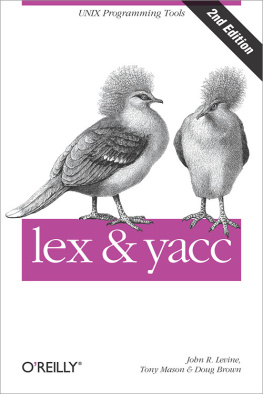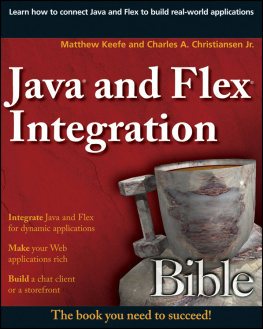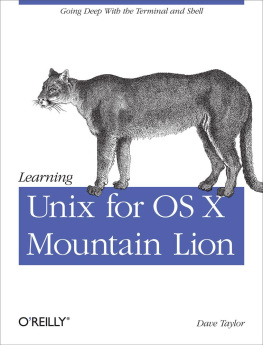John Levine - Flex & Bison: Text Processing Tools
Here you can read online John Levine - Flex & Bison: Text Processing Tools full text of the book (entire story) in english for free. Download pdf and epub, get meaning, cover and reviews about this ebook. year: 2009, publisher: OReilly Media, genre: Home and family. Description of the work, (preface) as well as reviews are available. Best literature library LitArk.com created for fans of good reading and offers a wide selection of genres:
Romance novel
Science fiction
Adventure
Detective
Science
History
Home and family
Prose
Art
Politics
Computer
Non-fiction
Religion
Business
Children
Humor
Choose a favorite category and find really read worthwhile books. Enjoy immersion in the world of imagination, feel the emotions of the characters or learn something new for yourself, make an fascinating discovery.

- Book:Flex & Bison: Text Processing Tools
- Author:
- Publisher:OReilly Media
- Genre:
- Year:2009
- Rating:3 / 5
- Favourites:Add to favourites
- Your mark:
Flex & Bison: Text Processing Tools: summary, description and annotation
We offer to read an annotation, description, summary or preface (depends on what the author of the book "Flex & Bison: Text Processing Tools" wrote himself). If you haven't found the necessary information about the book — write in the comments, we will try to find it.
If you need to parse or process text data in Linux or Unix, this useful book explains how to use flex and bison to solve your problems quickly. flex & bison is the long-awaited sequel to the classic OReilly book, lex & yacc. In the nearly two decades since the original book was published, the flex and bison utilities have proven to be more reliable and more powerful than the original Unix tools.
flex & bison covers the same core functionality vital to Linux and Unix program development, along with several important new topics. Youll find revised tutorials for novices and references for advanced users, as well as an explanation of each utilitys basic usage and simple, standalone applications you can create with them. With flex & bison, youll discover the wide range of uses these flexible tools offer.
- Address syntax crunching that regular expressions tools cant handle
- Build compilers and interpreters, and handle a wide range of text processing functions
- Interpret code, configuration files, or any other structured format
- Learn key programming techniques, including abstract syntax trees and symbol tables
- Implement a full SQL grammar-with complete sample code
- Use new features such as pure (reentrant) lexers and parsers, powerful GLR parsers, and interfaces to C++
John Levine: author's other books
Who wrote Flex & Bison: Text Processing Tools? Find out the surname, the name of the author of the book and a list of all author's works by series.







